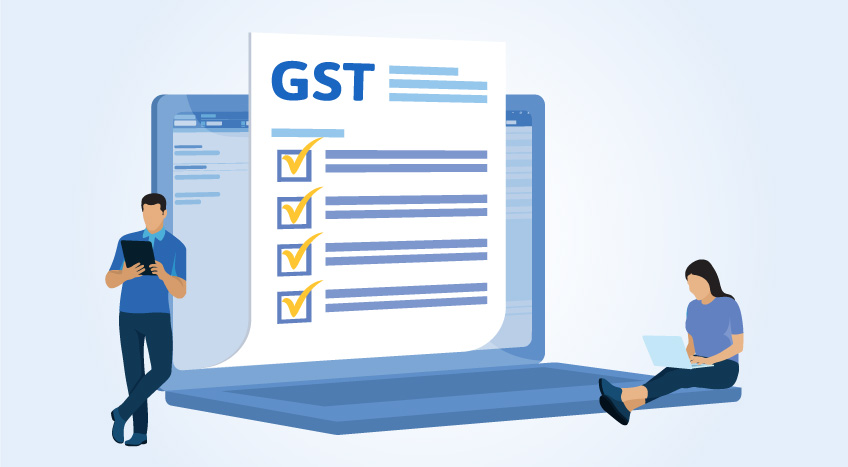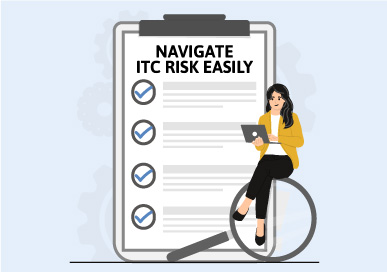Starting a business takes courage, but building one that lasts requires recognition and trust. In India, that recognition comes through Udyam registration, an initiative that gives micro, small, and medium enterprises (MSMEs) a verified identity in the eyes of the government. It’s more than just paperwork; it’s your business’s proof of credibility, helping you qualify for loans, subsidies, and protection under MSME laws.
If you’re ready to formalise your business and tap into new opportunities, this step-by-step guide will help you understand how to get your Udyam registration certificate quickly and confidently.
What is Udyam registration?
Udyam registration is the official process through which micro, small, and medium enterprises (MSMEs) in India get recognised by the Government of India. Introduced by the Ministry of MSME in 2020, this system replaced the earlier Udyog Aadhaar registration to make business recognition simpler, faster, and entirely online.
When you register your business on the Udyam portal, you receive a unique identification number and a digital certificate known as the Udyam Registration Certificate. This document serves as proof that your enterprise is officially classified as an MSME under government norms.
The registration is based on self-declaration, meaning you don’t need to upload any documents or proofs during the process. Your business information is automatically verified through databases such as PAN and GST. Once issued, the MSME certificate remains valid for the lifetime of your business and doesn’t require renewal. However, you have to update the details on the portal if your business scale, turnover, or investment changes.
Why Udyam registration matters for your business
Getting your Udyam registration certificate is not just a formality; it’s a powerful move that adds credibility, stability, and opportunity to your enterprise. Here’s why it matters:
- Access to easier financing: Banks and financial institutions give priority to registered MSMEs, offering quicker loan approvals and dedicated MSME credit schemes.
- Eligibility for government schemes and subsidies: Registered enterprises can benefit from various central and state government incentives, including capital subsidies, tax rebates, and skill development programmes.
- Priority in government tenders: MSMEs with Udyam registration enjoy preference in public procurement, making it easier to compete with larger corporations for contracts.
- Protection against delayed payments: The MSME Development Act ensures that registered businesses receive timely payments from buyers and provides a legal mechanism to resolve disputes efficiently.
- Enhanced business credibility: Displaying your MSME certificate signals reliability and professionalism to customers, partners, and investors, helping you build stronger relationships.
Eligibility criteria for Udyam registration
Before applying for a Udyam registration certificate, it’s important to understand whether your business qualifies as a Micro, Small, or Medium Enterprise (MSME) under the Government of India’s latest guidelines. The eligibility is determined based on your annual turnover and investment in plant, machinery, or equipment.
Below are the current limits as per the Ministry of MSME:
|
Category |
Investment in Plant and machinery/ equipment |
Annual turnover |
|
Micro Enterprise |
Up to ₹2.5 Cr |
Up to ₹10 Cr |
|
Small Enterprise |
Up to ₹25 Cr |
Up to ₹100 Cr |
|
Medium Enterprise |
Up to ₹125 Cr |
Up to ₹500 Cr |
Which business can apply for Udyam registration
The following types of business entities are eligible:
- Proprietorships
- Partnership firms
- Hindu Undivided Families (HUFs)
- Limited Liability Partnerships (LLPs)
- Private limited companies
- Public limited companies
- Co-operative societies
- Self-Help Groups (SHGs)
- Trusts
Other key points to note
- Registration is available for businesses operating within India only.
- Each enterprise should be registered only once, using a single Aadhaar and PAN combination.
- If your business expands and exceeds the specified turnover or investment limits, you must update your details on the Udyam portal to maintain compliance.
Step-by-step process to get your Udyam registration certificate
Registering your business under the Udyam portal is a simple and fully digital process. The entire registration process is free, paperless, and based on self-declaration, meaning no physical documents are required.
Follow these steps to get your Udyam registration certificate:
Step 1: Visit the official Udyam registration portal
Go to udyamregistration.gov.in, the official website managed by the Ministry of Micro, Small and Medium Enterprises.
Avoid third-party websites that may charge fees for registration.
Step 2: Select the appropriate registration option
- If you are registering for the first time, click on “For New Entrepreneurs who are not registered yet as MSME”.
- If your business already has a Udyog Aadhaar Memorandum (UAM) or EM-II, choose the relevant option to upgrade your existing registration to Udyam and continue the process.
Step 3: Enter your Aadhaar number
Enter the Aadhaar number of the business owner or authorised signatory.
- For proprietorship: use the owner’s Aadhaar.
- For partnerships or companies: use the Aadhaar of the managing partner or authorised director.
Click validate and generate OTP to verify your identity.
Step 4: Provide PAN and validate details
After Aadhaar verification, enter your PAN number and validate it. The portal automatically fetches details from the Income Tax and GST databases to ensure accuracy.
Step 5: Fill in business details
Provide key information about your business, including:
- Name and type of enterprise (proprietorship, LLP, company, etc.)
- Business address, state, district, and pin code
- Mobile number and email ID
- Bank account details
- Nature of activity (manufacturing or services)
- NIC code (National Industrial Classification code) representing your business activity
- Total number of employees
Step 6: Enter your investment and turnover
Enter your enterprise’s investment in plant, machinery, or equipment and annual turnover as per the latest financial year.
This information determines whether your business falls under the Micro, Small, or Medium category.
Step 7: Final verification and submission
Once all details are entered, review the form carefully.
Click ‘Submit’ and ‘Get Final OTP’, then verify using the one-time password sent to your registered mobile number.
Step 8: Receive and download your certificate
After successful submission, you’ll receive your Udyam Registration Number on the screen and by email.
The Udyam registration certificate, or MSME certificate, can be downloaded directly from the portal. It includes a QR code that links to your enterprise details for instant verification.
Common mistakes to avoid during registration
While the Udyam registration process is simple, small errors can delay approval or create issues later. Here are some of the most common mistakes business owners make and how to avoid them:
- Using incorrect Aadhaar details: Make sure the Aadhaar number belongs to the authorised signatory of the business. If your mobile number isn’t linked with Aadhaar, update it first to receive OTPs smoothly.
- Mismatch between PAN and business details: Ensure that the PAN used for registration matches the legal entity of your business. For example, a company’s PAN should not be mixed up with a director’s personal PAN.
- Choosing the wrong business category: Select the correct classification (Micro, Small, or Medium) based on your latest turnover and investment data. Entering wrong figures may cause compliance issues later.
- Selecting the wrong NIC code: The National Industrial Classification (NIC) code should accurately represent your business activity. Choosing an unrelated code can lead to errors in verification or missed benefits.
- Incorrect or outdated contact details: Double-check your email ID and mobile number before submission, as all official communication, OTPs, and certificates are sent to these contacts.
- Submitting incomplete information: Review every field before submitting. Leaving sections blank or entering inconsistent data may result in rejection or require reapplication.
- Not updating details after business growth: If your turnover or investment changes, update your Udyam profile to stay compliant with MSME definitions. Failing to do so could make your registration invalid.
Conclusion
Udyam registration certification officially recognises your enterprise as an MSME. This opens the doors to government support, financial incentives, and greater market credibility.
The process is simple, quick, and completely online. Whether you’re an emerging entrepreneur or managing an established business, Udyam registration helps you build a stronger foundation for growth and stability.
Formal recognition doesn’t just validate your hard work; it empowers you to dream bigger, compete confidently, and take your business to the next level.
If you’re already registered and looking to manage your business operations efficiently, TallyPrime can help. From maintaining accurate financial records to generating GST reports and managing compliance seamlessly, TallyPrime simplifies day-to-day accounting for MSMEs so you can focus on growing your business with confidence.
Frequently Asked Questions (FAQs)
1. Is Udyam registration free of cost?
The whole Udyam registration process is completely free on the official government portal. Be cautious of third-party websites that charge a fee for registration services.
2. How long does it take to get the Udyam registration certificate?
In most cases, the Udyam registration certificate is generated instantly after successful submission and OTP verification. You’ll receive it via email, and it can also be downloaded directly from the Udyam portal.
3. Do I need to renew my MSME certificate every year?
The MSME certificate issued under Udyam registration is valid for the lifetime of your business. However, you must update your details on the portal if your business scale, turnover, or investment changes.

















